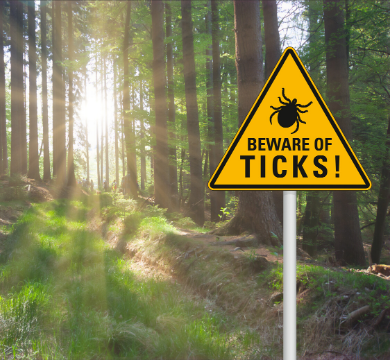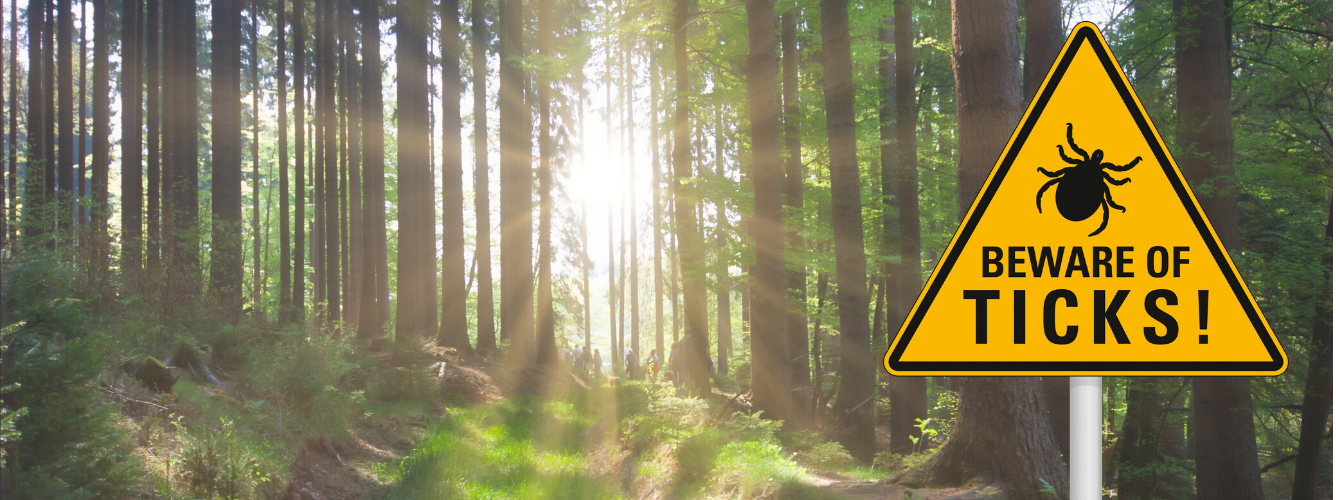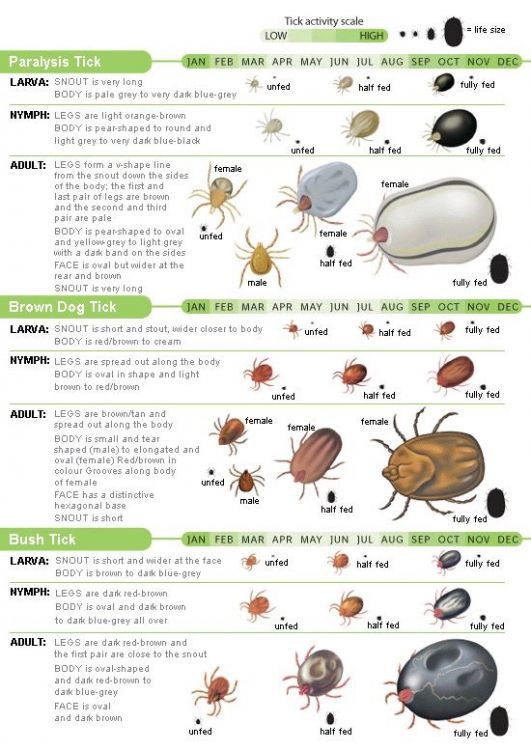

Tips on Ticks: Protect, Prevent, and Treat Ticks on Dogs and Cats
Does your furbaby love a good stroll through the bush, or maybe a cat-nap under some shady foliage?
Pay attention, animal lovers, because amidst those lazy summer jaunts and snooses, another lifeform is springing into action. It’s tick season in Australia, and they’re waiting for a free ride and a meal off your furry friends. And that includes the dangerous Eastern Australia’s Ixodes holocyclus, the Paralysis tick. So don’t delay on safeguarding your pets from danger, and get the know-how you need.
What are ticks?
At Lucky Pet, we love critters big and small. But when it comes to ticks, there’s hard to find anything to love! And that’s because most tick bites on the eastern seaboard are due to Ixodes holocyclus, also known as the Paralysis tick. It releases a neurotoxin into the bloodstream of its host during a bloodmeal, while engorging itself and expanding to many times its unfed size. It generally feeds on the blood of birds and mammals, though can also be found on reptiles.
While these ticks can also be harmful to you and your children, they are even more dangerous to your unsuspecting pets.
What to know about ticks:
-
September marks the beginning of tick season, with the adult Ixodes holocyclus tick population peaking around December.
-
Ticks are more active after a rainfall, and in warm, wet climates.
-
Ticks do not fall out of trees nor do they jump, but they do climb to the tops of grasses and vegetation, with forelegs extended in search of passing hosts.
-
They attach themselves to hosts (dogs, cats, pets, birds, wildlife, humans) by piercing the skin with their mouth and injecting an anticoagulant to prevent blood from clotting, thus administering the toxic saliva.
-
They do not necessarily bite instantly, but may wander around and find their favourite spot.
-
Paralysis ticks are found throughout the eastern seaboard of Australia, and possibly in Tasmania.
-
Though named Ixodes holocyclus, common names include the Paralysis tick, bush ticks, grass ticks, and seed ticks, depending on their life cycle stage.
-
The life cycle includes four stages: egg, larva, nymph, and adult. Only the egg does not require a bloodmeal to moult and grow.
-
Depending on their stage and last meal, ticks vary greatly in size. Some are as small as a pen dot or freckle, and can be very hard to see.
Within the adult life cycle, it’s usually the adult female tick that feeds off hosts, while the adult males search hosts for female ticks to mate with, and may actually parasitise the female.
Are you in a tick-affected area?
Don’t give these parasites a free ride into your house. Plan ahead with Lucky Pet’s huge selection of preventative tick treatments. From fidos to felines, we have products for your whole pack. Peruse tick collars and tablets and spot-on medications like Frontline Plus, NexGard, Advantix, Bravecto, Kiltix, Revolution Plus, Seresto & Simparica. But don’t take our word for it. Check out all our great tick treatments and find what suits you best.
Proactive Tick Protection On All Fronts
Being proactive means not relying solely on modern day meds, no matter how good they are. Protect your pets by taking action on all fronts. Make sure your pet has a great tick deterrent, but also remember to avoid prime tick habitat like tall grass and bush, and try to stick to cleared paths. Know the symptoms, and check over your pets on a daily basis while being prepared to immediately remove ticks.
Common Symptoms:
Symptoms can range from mild to severe, but should always be treated immediately. Symptoms in pets may include:
-
Lethargy, weakness, or loss of motor skills, especially in the hind legs
-
Partial or complete paralysis
-
Vomiting, loss of appetite, or excessive drooling
-
Fast heart rate
-
Coughing, change in bark, in sound of breathing, noisy panting, or difficulty breathing
-
Localised swelling and redness at the site of a bite
-
Other unusual symptoms or change in behavior
How To Check For Ticks:
Check your pets daily, and thoroughly.
-
Start by running your fingers through your pet’s fur. You’ll quickly learn what feels normal, and what doesn’t belong. The tips of your fingers will likely pick up the feeling of even a very small tick (it may feel as small as a tiny bump or abrasion). This is a good time to note any bumps that are not ticks, such as skin tags or moles. Sometimes moles are mistaken for ticks, so if you’re unsure look very carefully, or even use a magnifying glass. Moles should not be removed except by a vet.
-
Look and feel closely around the muzzle, cheeks, ears, eyes, and even gums and teeth of your pet. Check inside ears, and be especially attentive to any creases or folds.
-
Continue down around the entire neck and forelegs, removing collars or harnesses. Check the patchier areas of underarms, and in between each toe of the paw. Continue down the stomach and along the back, hind legs, and tail.
-
While perhaps less pleasant, don’t forget a visual inspection of the nether-regions.
-
Give them a special treat to positively reinforce the scan. Daily full-body handling also makes other care much easier and less stressful, like clipping nails, grooming, and other health check-ups.
How To Remove Ticks:
If you find a tick that has burrowed, remove it immediately. Consider distracting your pet with a treat or a chew toy. A Lickimat Splash and some KONG paste or even peanut butter are great to get an antsy dog to stay still (when all else fails, peanut butter always does the trick!)
-
Be prepared with clean high quality tweezers or a specialised tick removal tool, and a container with a watertight lid with a bit of isopropyl alcohol to dispose of the tick.
-
Avoid pulling out fur while getting a good look at the tick by separating the fur around the body of the parasite. Use gloves and do not touch the tick directly.
-
As close to your pet’s skin and the mouth of the tick as possible, use the tweezers to lightly grasp the tick without pinching your pet.
-
Without squeezing the tick unnecessarily, pull it steadily straight off the skin with no twisting or jerking. Try to remove the entire tick in one motion, without leaving any of the head or mouth lodged into the skin, which can lead to infection.
-
Drop the tick into the container with alcohol, and write down the date of removal in case symptoms develop.
-
Check the wound to make sure the entirety of the tick has been removed, then clean the area with a pet-safe disinfectant or antiseptic cream. Do not use petrol, methylated spirits, kerosene, petroleum jelly, a lit match, or any other such products, as they do not work and will cause the tick to burrow deeper into the skin, and/or inject more toxins into the bloodstream.
-
Continue checking your pet for ticks to ensure you remove them all. Even one tick can be highly hazardous. If you’ve found a tick or ticks on your pet, check children and yourself as well.
-
Wash hands thoroughly with soap and hot water.
Here's some handy information about the different tick varieties.
You Might Also Like













